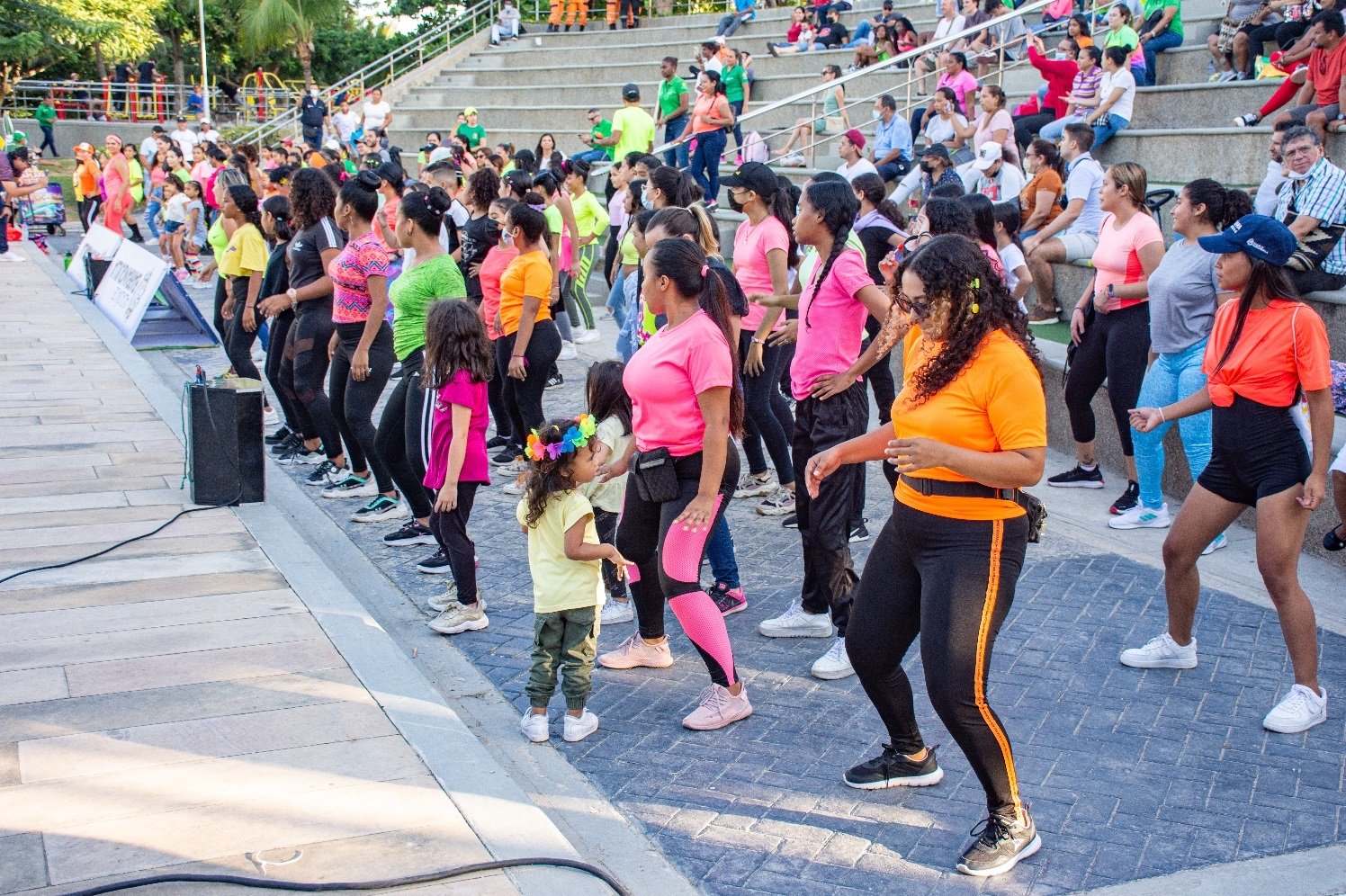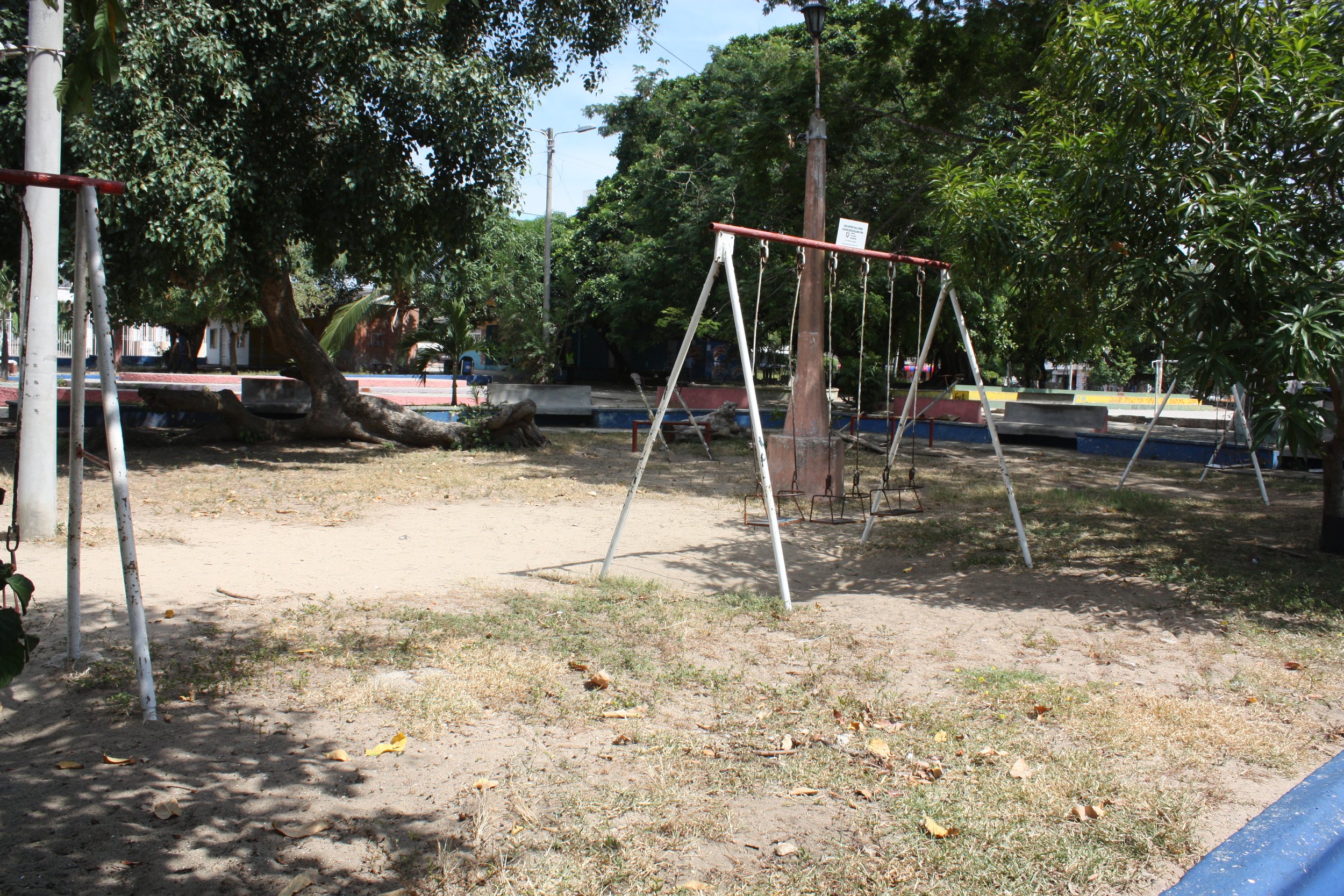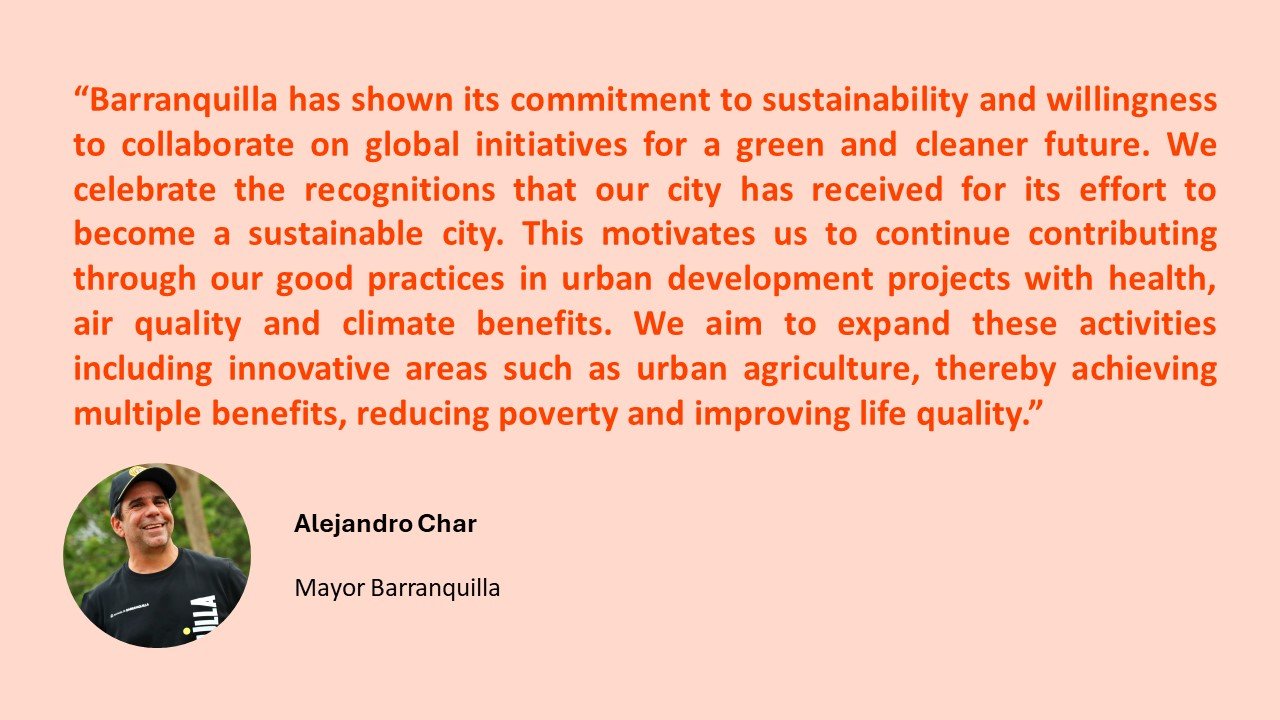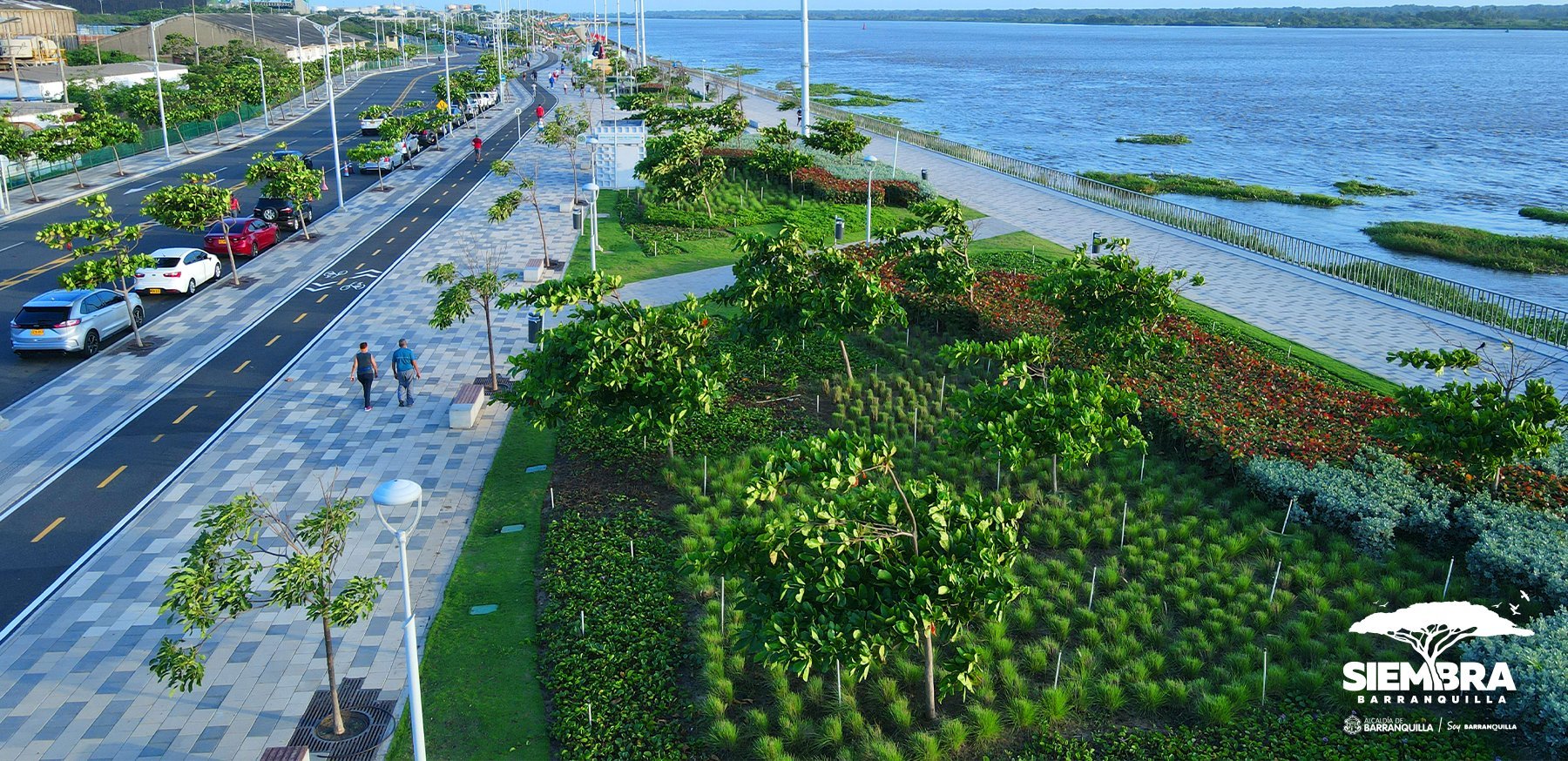
Urban transformation towards a healthy, clean and resilient city
Barranquilla, Colombia
Case study developed in partnership with Barranquilla City Government
1.3 M
Barranquilla population size
3 times
the WHO air quality guideline of 5 μg/m3
(15 μg/m3 annual average PM2.5 concentrations)
$19,480
GDP per capita PPP
92 MtC02e
National GHG emissions per capita
Sources of emissions
Transportation
Industry
Transportation is the leading source of emissions in Barranquilla
Overview
Barranquilla has experienced dramatic transformation during the last decade. Previously, the city struggled with flooding issues that were a peril for public safety and private property, lackluster public spaces and inefficient public transportation. With political leadership, the development of strategic partnerships, and public and private investments, the city is now positioned as a regional champion integrating climate resilience, health, and air quality into urban planning.
Photos Above: Los Andes Park before and after its remodeling, with added amenities of a perimeter path, courts, skating rinks and a bio-healthy gym. The park is located in the southwestern part of the city and has an area of 8,992 m2. Photo credit: Mayor's Office of Barranquilla.
As a coastal city with intense temperatures that can reach 40 degrees Celsius and a relative humidity fluctuating between 70-80%, Barranquilla’s leadership realizes the importance of addressing the environmental determinants of health. In 2018, the city installed its first three air quality monitoring stations and two years later, the city published the city-level integrated Air Quality Management Plan, an ambitious intersectoral plan to tackle air pollution and protect public health.
The Air Quality Management Plan has set the tone for joint efforts between the Health Secretariat and Barranquilla Verde, the city’s environmental agency. The plan established health goals based on the WHO Guidelines and included public environmental health as the first of the plan’s working areas. Key actions included creating air quality and health working groups, implementing an environmental health surveillance system, and periodically estimating the health impacts of air pollution. This component included the restoration and expansion of green urban areas, showcasing the innovative and integrative approach considered in the plan. The plan also focused on reducing emissions from industry and transport, incentivizing active mobility, and raising awareness about the effects of air pollution.
Efforts in Barranquilla also mirror ambitious climate and health goals made at the national level. In December 2020, Colombia revised its Nationally Determined Contribution (NDC) goals to reduce greenhouse gases by 51% and black carbon emissions by 40% in 2030 compared to 2014 levels. This makes Colombia only the third country to include black carbon reductions in their NDCs (after Mexico and Chile).
Black carbon is both a climate and air pollutant; therefore, reducing emissions from major black carbon sources can be an effective strategy to simultaneously mitigate climate change while achieving local benefits for air quality and human health. According to Colombia’s first national emissions inventory of black carbon and other air pollutants, the major sources of black carbon include burning firewood for heating and cooking, diesel for transportation and non-road machinery, agricultural burning of sugar cane residue after harvest and brick production. These sectors also emit other air pollutants, such as nitrogen oxides, volatile organic compounds, and other particulates, and in some cases also emit greenhouse gases like carbon dioxide.
Photo Above: Citizens of Barranquilla make use of revitalized urban spaces for exercise and recreation. Photo credit: Mayor's Office of Barranquilla.
In partnership with Pan American Health Organization and World Health Organization, the country estimated the health co-benefits of these ambitious NDC goals. According to these estimates, achieving the NDC goals would prevent more than 3800 premature deaths annually from ambient air pollution in 2030. In economic terms, the value from avoided morbidity and premature mortality incidences that would have otherwise occurred in 2030 is US$1.9 billion.
In October 2023, Colombia’s NDC was ranked 1st (out of 170 NDCs analyzed) in terms of integration of air quality and health targets into national climate commitments. See Figure 1.
Figure 1: The Clean Air NDC scorecard by the Global Climate and Health Alliance ranked Colombia as the number one country dedicated to clean air and climate action. For more information, please visit bit.ly/CleanAirNDCs
Impact
This integration of health, climate and environmental criteria is well incorporated into some of the main urban development projects in Barranquilla. The Gran Malecon, a 5 km riverwalk beside Magdalena River is a public space where Barranquilla residents can exercise, bike and relax. The site attracts more than 10 million visitors per year and is a city strategy to not just reduce emissions but also to promote health by incentivizing physical activity and recreation. Similarly, the project Todos al Parque restored 285 public spaces into recreational parks available for community use and health promotion. This included the introduction of 709,849 square meters of green urban areas, allowing 93% of the population to reach a park within an eight-minute walk.
Among these projects was the opening of the Cienaga de Mallorquin, which offers 5 kilometers of pedestrian and transit pathways, protecting a 600-hectare wetland ecosystem. It has been walked by approximately 25,000 people between its opening on August 31, 2023 and mid-October 2023. In addition, the "Siembra+" program has revitalized 333,000 square meters of hard urban areas into green spaces, with more than 130,000 trees planted and maintained. This creates an environment more conducive to outdoor activities and recreation in a city with a climate like Barranquilla, making use of pedestrian zones, pathways, dividers, and other urban spaces.
Photo Above: The Gran Malecon in Barranquilla is a redeveloped 5km riverwalk where residents can exercise, bike and relax. Photo credit: Mayor's Office of Barranquilla.
Photo Above: The Cienaga de Mallorquin was opened in August 2023. It offers 5 km of pedestrian and transit pathways, protecting a 600-hectare wetland ecosystem.. Photo credit: Mayor's Office of Barranquilla.
Currently, Barranquilla city management, Barranquilla Verde and the Health Secretariat is collaborating with the Pan American Health Organization and the Universidad del Norte to use health impact assessment tools developed by the World Health Organization to estimate the health benefits of these and future interventions.
The city monitors key indicators-such as occupancy, air quality data, and increased physical activity-to highlight the impacts of these projects.
Furthermore, the city’s air quality management plan addresses the reduction of main emission sources, and includes interventions such as: increasing environmental and energy efficiency in industries; optimizing emission control systems; introducing zero and low-emission vehicles; and expanding cycling infrastructure.
Barranquilla is leading by example, preparing bold interventions that integrate air pollution improvements and health promotion. It is an inspirational example for smaller cities that are looking to revamp and revitalize their development agenda.
Health highlights
The city’s Air Quality Management Plan includes health goals based on WHO guidelines. Key actions in the plan include creating air quality and health working groups, implementing an environmental health surveillance system, and periodically estimating the health impacts of air pollution.
The city’s strategy to integrate health, climate and the environment includes the introduction of green public spaces where Barranquilla residents can exercise, bike and relax. These recreational parks not only serve to reduce emissions but also promote health by incentivizing physical activity and recreation. Overall, 709,849 square meters of green urban areas were created, allowing 93% of the population to reach a park within an 8-minute walk.
The city monitors key indicators-such as occupancy, air quality data, and increased physical activity-to highlight the impacts of these urban development projects. These positive health outcomes can boost greater interest in public health policies and foster sustainability in urban investments.
The city is currently working with the Pan American Health Organization and the Universidad del Norte to use health impact assessment tools developed by the World Health Organization to estimate the health benefits of these and future interventions.
Lessons learned
Progress depends on cooperation among the health and environmental sectors, and strong engagement with other key stakeholders, including academia, and technical partners.
Momentum is maintained when the city is able to analyze and publicize the health and climate gain from the city’s interventions.
Integrating health, social, environmental and recreational benefits into projects and events supports greater buy-in from the community.
The city’s investment in monitoring health outcomes and indicators is fundamental to allow the estimation of health gains that can boost public health policies and foster sustainability.
The conversion of hard urban areas into green spaces encourages city residents to spend more time outdoors. This leads to them appreciating both clean air and active lifestyles, helping to sustain public demand for ongoing efforts.
The city used the support from the World Health Organisation, who has developed tools to support the integration of health impact assessments into urban policies. WHO regional offices such as PAHO are uniquely positioned to support implementation, engage with key stakeholders, and develop actions towards a comprehensive integration of health goals into city programs.
Strategic partners
The city would like to acknowledge the following partners in supporting its clean air and climate journey















